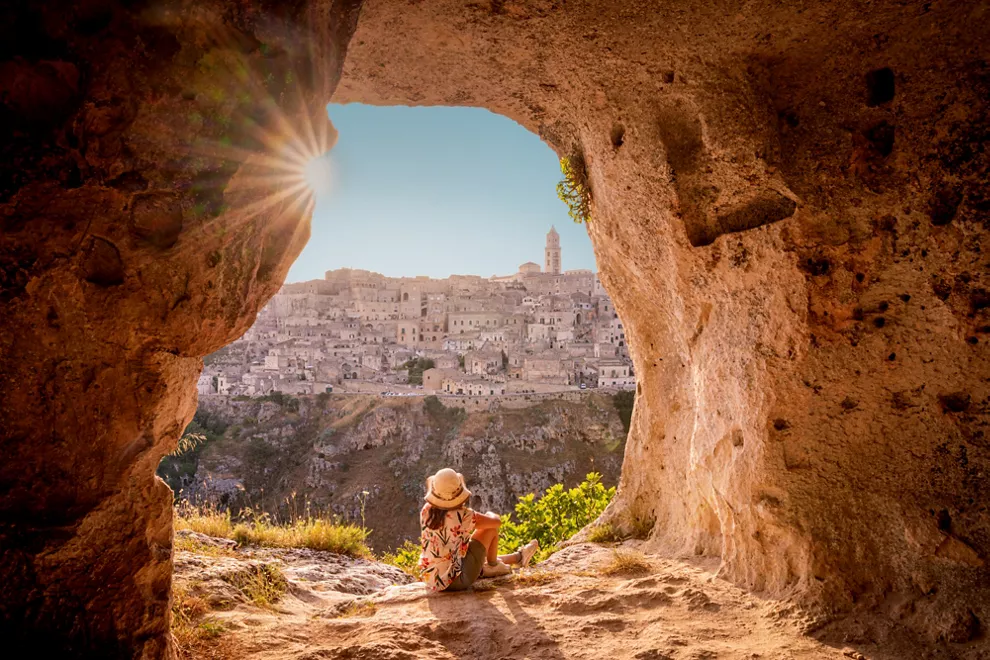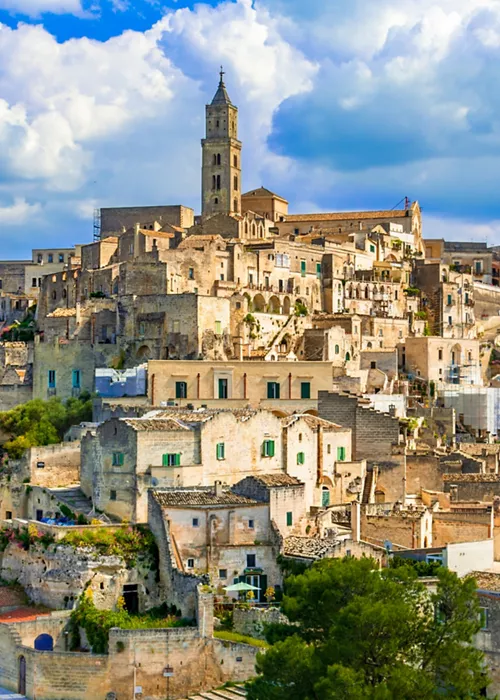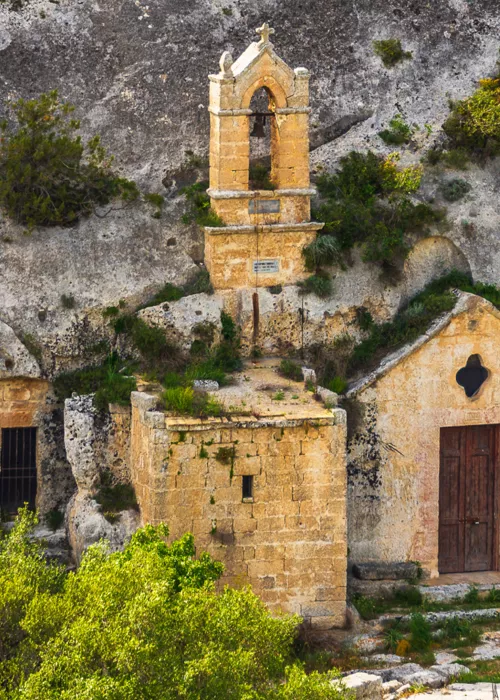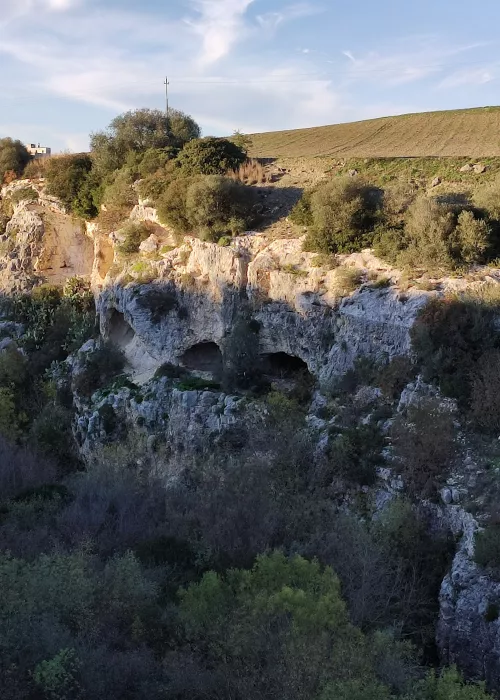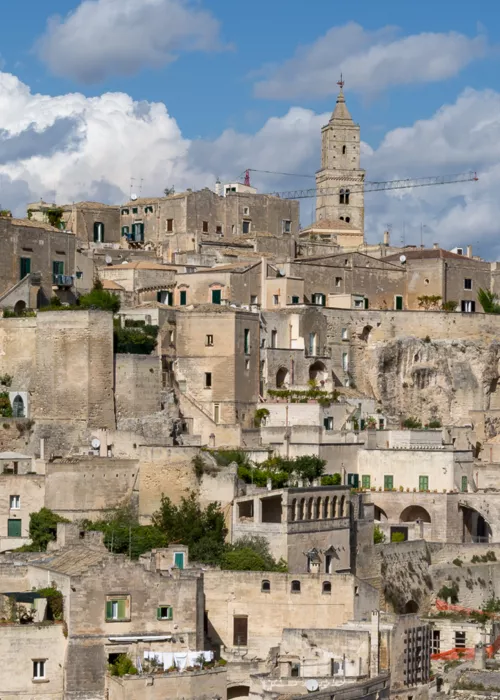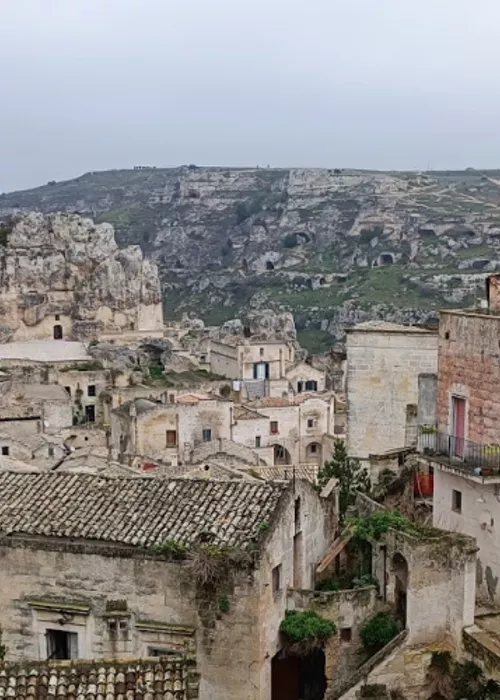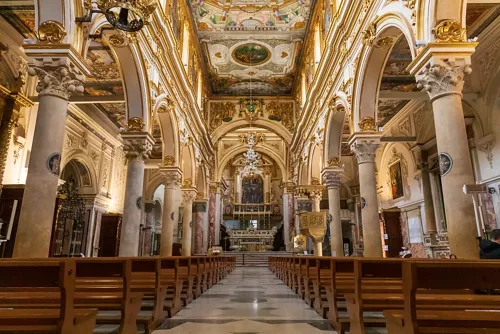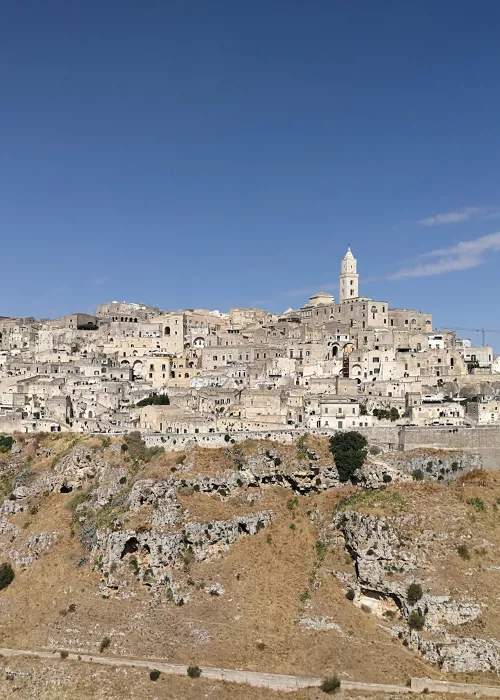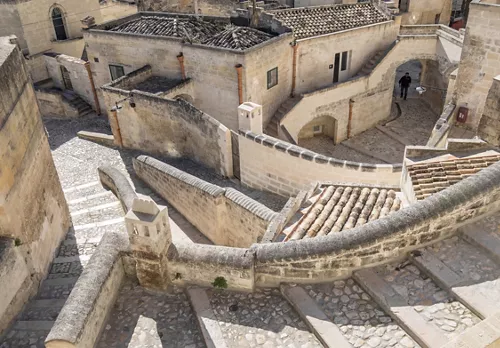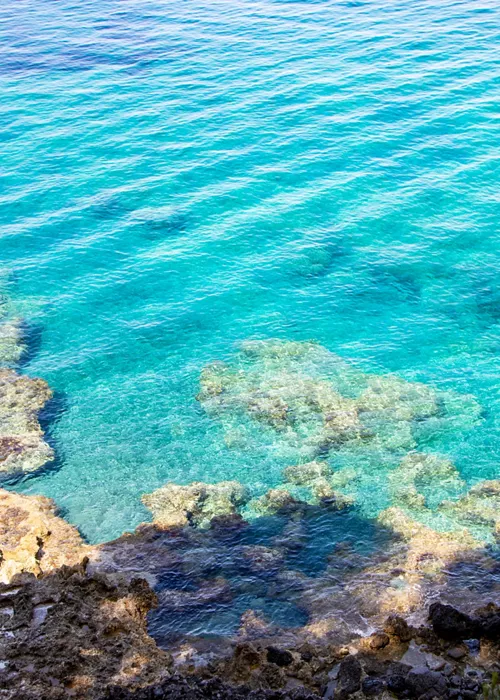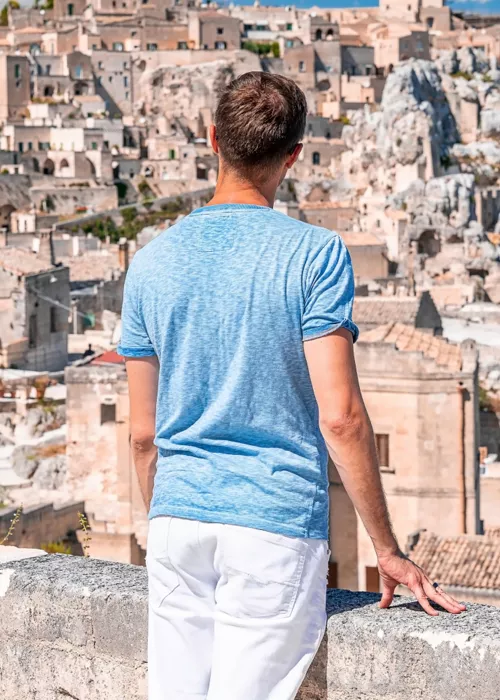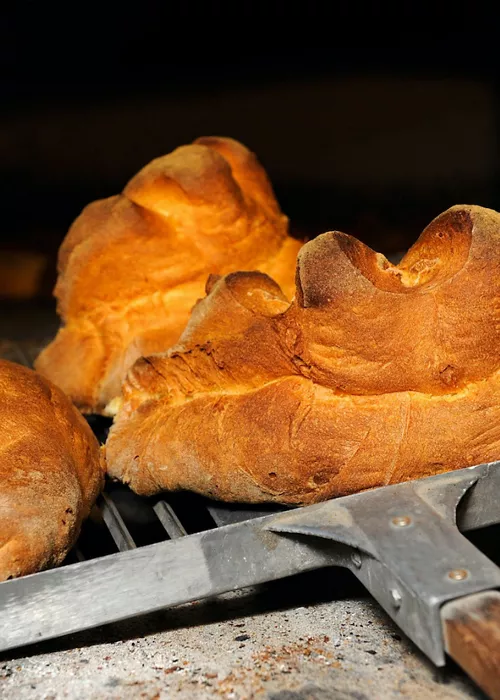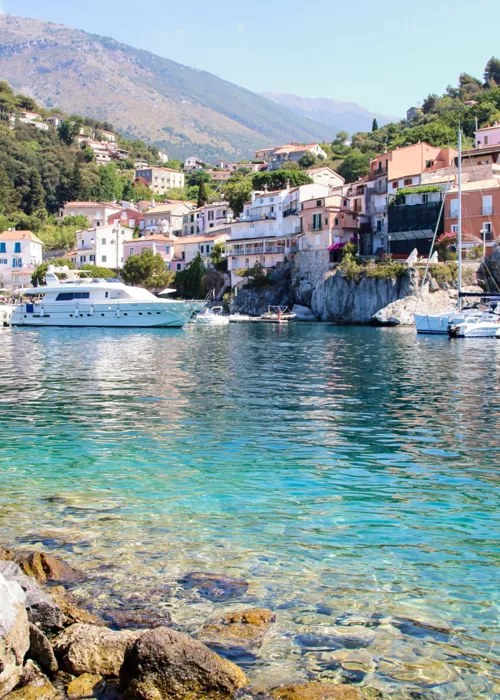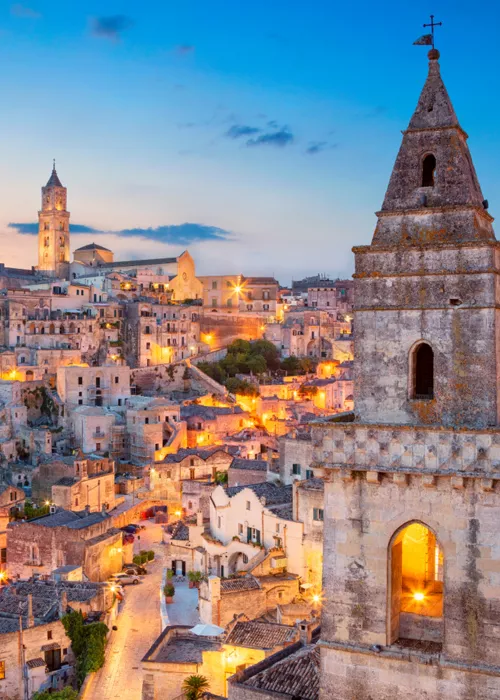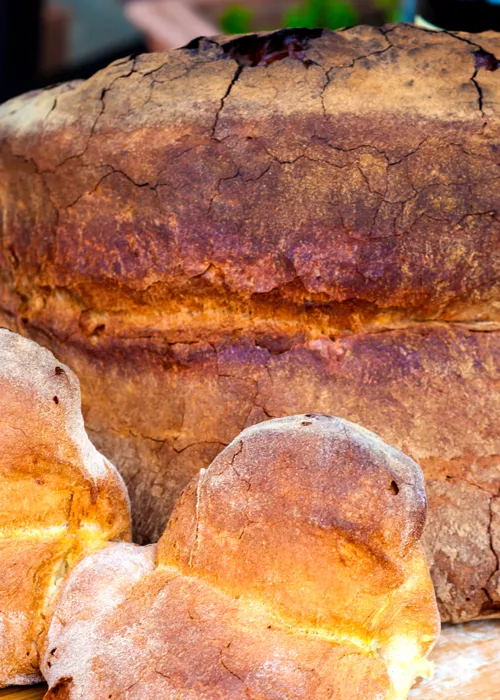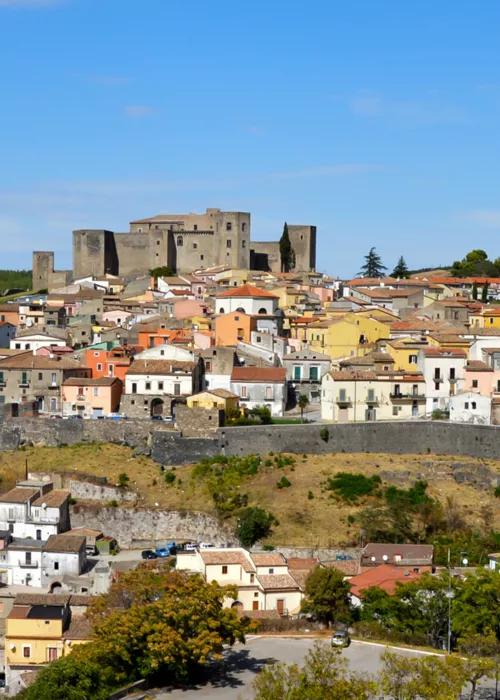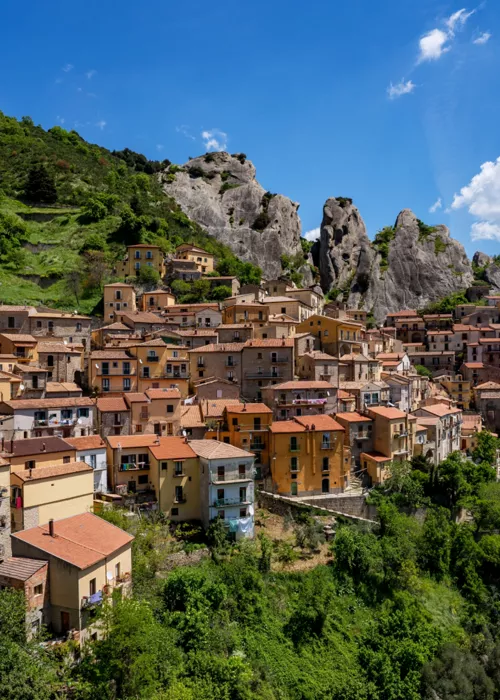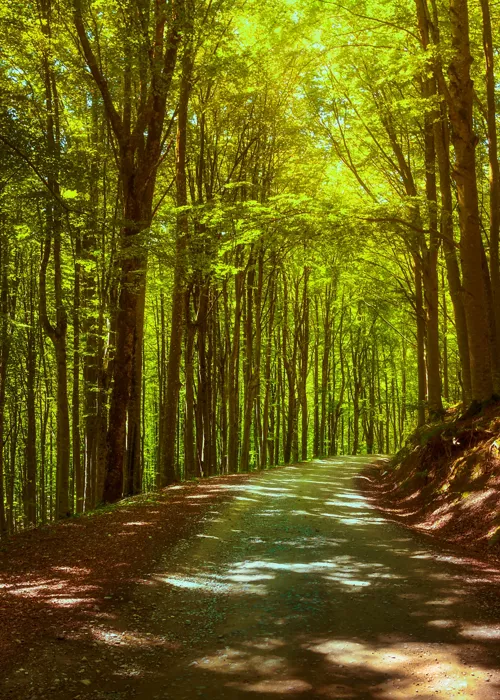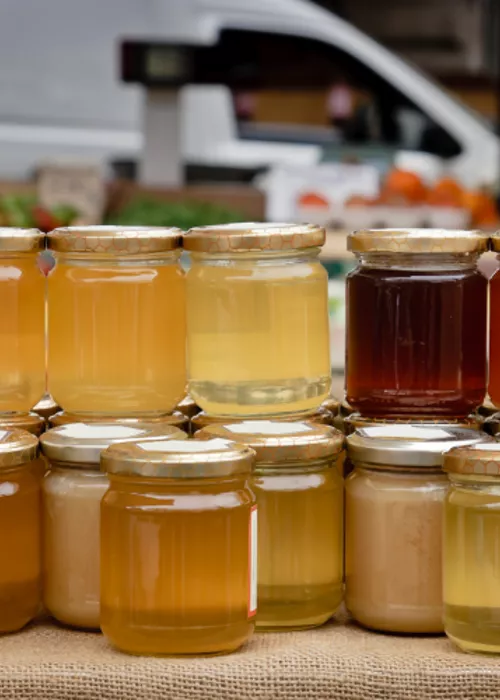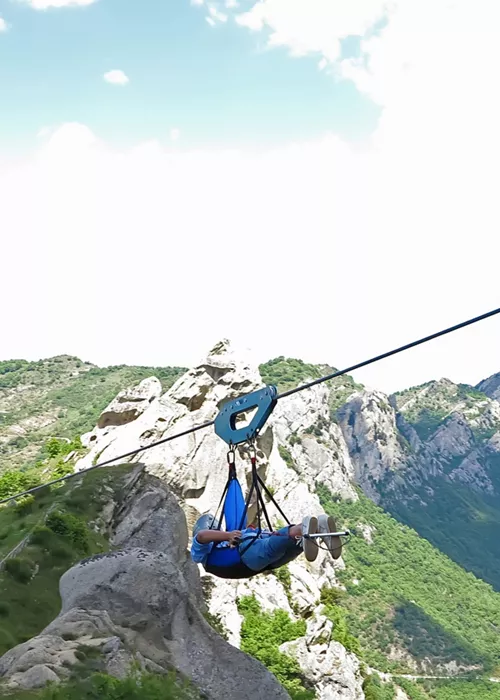Matera, a UNESCO World Heritage Site: the city of stones and rock churches
5 minutes
Matera is one of the oldest, still inhabited cities in the world:
a magical place that preserves evidence of human settlements since the Palaeolithic period in its natural caves carved into the rock. Over the centuries, these caves, which were to become the symbol of the city, were developed into increasingly complex structures in two large natural amphitheatres.
When visiting Matera, which is located on a limestone plateau in Basilicata characterised by deep fissures, ravines, rocks and caves, you feel as if you are entering a nativity scene. Houses, churches, monasteries and hermitages are built in the natural caves of the Murgia in a landscape so evocative that it was chosen as the setting for films such as Mel Gibson's The Passion of the Christ and Pier Paolo Pasolini's The Gospel according to St Matthew. Are you ready to lose yourself in the wonders of this unique city?
The history and magic of Matera
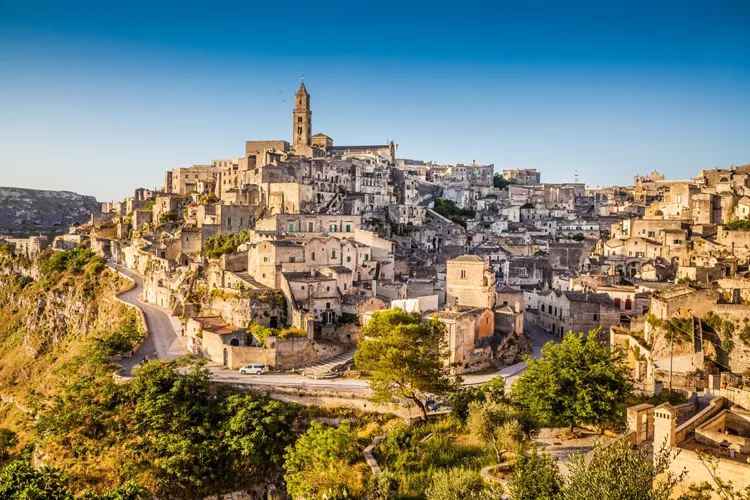
The history of Matera begins in prehistoric times, as evidenced by the numerous pottery vessels dating back to the Early Neolithic period that have been found in the caves.
The first nomadic peoples to come to the Murgia were followed by others dedicated to sheep farming. These people settled on the hill of Civita, founding the first nucleus of the city.
After the fall of the Western Roman Empire and the reconquest by the Byzantine emperors, Matera was long under the control of the Lombards and Saracens until the descent of the Normans into Italy in 1042.
The rock churches dotting the city date back to this period: carved into the rock, they are decorated with frescoes and sculptural elements. Parallel to the historical core, the new city of Matera began to develop from the 13th century, with elegant districts built by the most famous Italian architects.
What to see in Matera
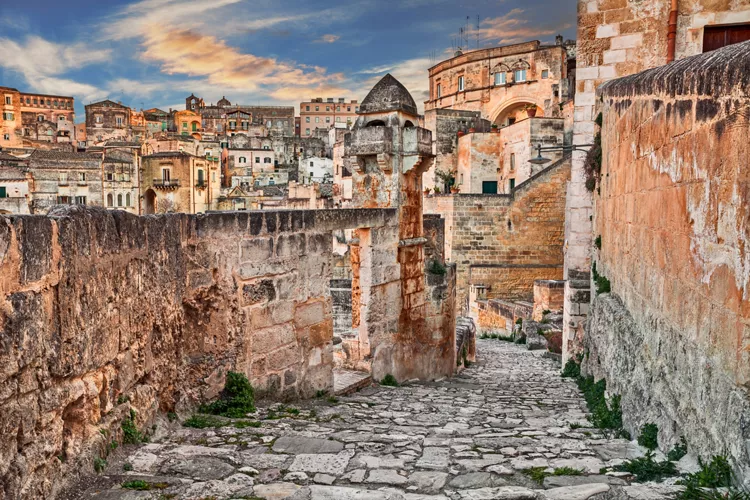
Once you have overcome your initial astonishment at this unique cultural and architectural gem, you will need to decide what to see in this “second Bethlehem”.
The best way is to begin with the historical centre, the two districts known as Sassi di Matera, which were declared UNESCO World Heritage Sites in 1993.
Discovering the Sassi means strolling through the city's history, moving among the caves and underground passages of the Sasso Caveoso, where the ancient cave dwellings have remained intact over the centuries, and getting lost among the shops of the Sasso Barisano, stopping at the many panoramas to admire the unique views that this city can offer.
Visit the Casalnuovo House Cave to discover how people lived in these rooms until 1958, when the population abandoned the caves and moved to more modern quarters.
To the east of the city, in the Murgia Materana Park, take time to visit the rock churches of Matera, which are one of the most distinctive features of the settlement. More than 150 religious sites were built here between the early Middle Ages and the 19th century, linked to specific historical, social and religious phases in the area.
Not to be missed is the Crypt of the Original Sin, a rock church dating back to the Longobard period and characterised by a cycle of frescoes that has earned it the nickname “the Sistine Chapel of rock churches”.
What to do around Matera
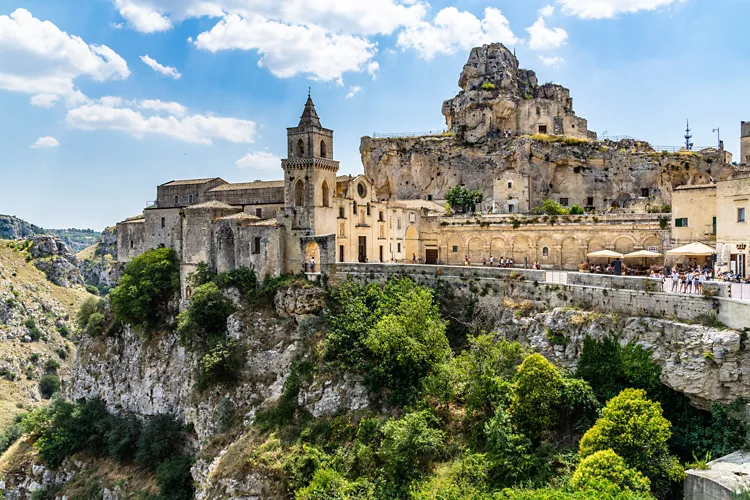
Getting lost in the alleys and narrow streets of Matera as you explore is the best way to discover the many wonders of the city.
In the Sasso Caveoso, you can get a better understanding of the customs and traditions of the inhabitants of the ancient Sassi districts from a visit to the Historic House Cave of Vico Solitario, a real museum furnished with authentic furniture and tools from the period when it was inhabited.
Piazzetta Pascoli Matera, one of the most beautiful vantage points in Matera, is a balcony over the Sassi where you can pause and take in the city’s marvels. From here, you can also access the National Museum, housed in Palazzo Lanfranchi, with its collection of medieval and modern art.
If you are in Matera on Easter Sunday, you can attend the city's most evocative event, the Via Crucis (Way of the Cross), which winds through the historic centre from Piazza Sedile, re-enacting stage by stage the last hours of Jesus' life, from the Last Supper to the Stone of Anointing, with the statues of the Dead Jesus, Our Lady of Sorrows and the Flagellated Jesus carried on the shoulders of the brethren of the Confraternity of Flagellated Jesus.
What to eat in Matera: local dishes to try
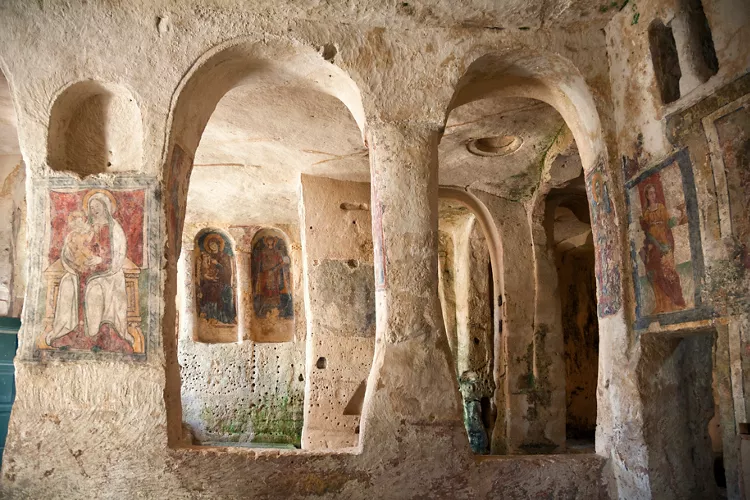
The local food and wine is very diverse and is linked to the city's long history.
If you’re deciding what to eat in Matera, why not try the characteristic bread made from the famous Basilicata durum wheat?
And bread is also the basis of one of the most iconic local dishes, cialledda salad, which is to be eaten hot with egg, bay leaves, garlic and olives, or cold with bread moistened with tomatoes and garlic.
Cruschi peppers, from the Senise area, can be enjoyed pan-fried or as a condiment for pasta and bruschetta.
If you love meat, order pignata, a delicacy made with mutton slow-cooked in a clay pot along with potatoes, tomatoes and soppressata salami.
There is no shortage of wine good enough to have earned the Matera DOC label and produced in various municipalities in the Matera area from Aglianico, Sangiovese, Primitivo, Greco and Malvasia di Basilicata grapes.
3 unusual places in Matera to explore
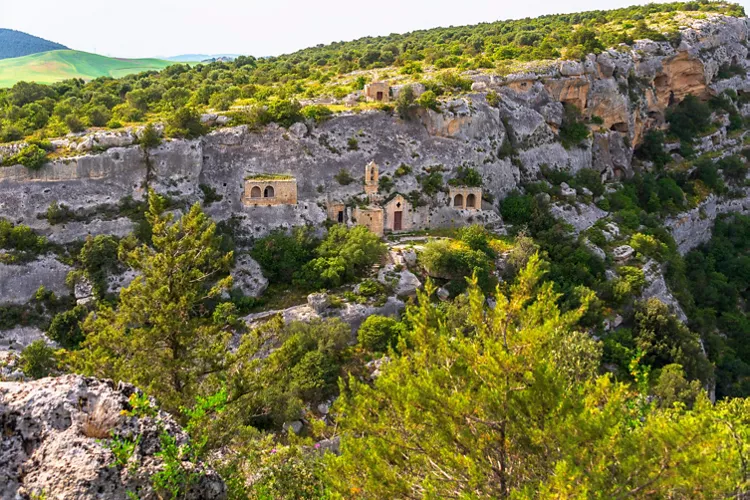
Due to its particular configuration, Matera is a city full of unusual places to discover.
A stone's throw from Matera Cathedral, let yourself be enchanted by the ancient Casa Noha, a tuff structure with vaulted ceilings and delicate carvings and cornices that will take you through the history of Matera thanks to an innovative project curated by the Fondo Ambiente Italiano (FAI).
In the heart of the old town, beneath Vittorio Veneto square, lies the Long Palombaro, an imposing cistern for collecting water that was built in several stages from the 16th century onwards. You can visit it and get a taste of the Matera Sotterranea thanks to graceful walkways suspended over the water.
And if you want to be captivated by a unique and atmospheric view of the city, the Belvedere di Murgia Timone awaits you in the heart of the Murgia Materana Park.
From here, you can enjoy the nativity scene effect for which the city is famous, especially at the end of the day.

